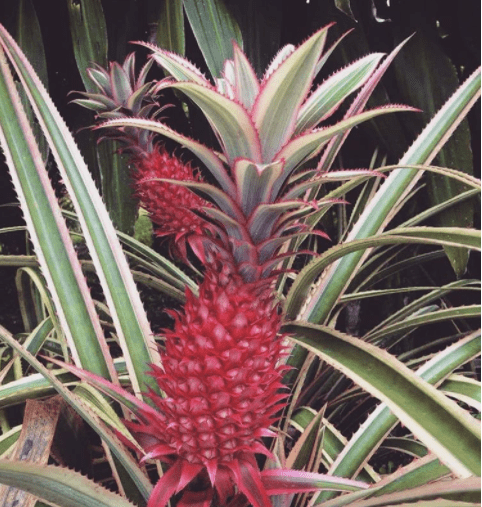Pink Pineapples Are Real Now, Here’s How They Get Their Color

At the end of last year, the FDA approved Del Monte’s “pink pineapple” in regards to safety when being consumed and ability to sell in the United States. While nobody had seen one of the pineapples as of yet, pictures have begun to circulate on the Internet recently as test crops of the new pineapple are being grown on plantations of both Dole and Del Monte in Hawaii and Costa Rica.
Everyone knows by now that this pineapple has been genetically modified to obtain its pink color and sweetness, but how that engineering was actually done is a bit of a mystery. Based on Del Monte’s initial patent for what they called the “Rose Gold” pineapple, here’s what’s actually being done to the pineapple to make it pink.
When young, pineapple fruits produce a lot of a pigment called lycopene, which is also responsible for the red color in your tomatoes. As the fruit matures, that lycopene is converted by enzymes, or proteins that cause reactions, that are naturally found within the pineapple into yellow carotenoids that give the fruit the yellow color we’re accustomed to and also add some acidity to its flavor profile.
In this particular variant, Del Monte was able to simply suppress the genes responsible for developing those enzymes and preventing lycopene’s conversion. While it doesn’t fully inhibit conversion, the modification is enough to develop the pink color in the fruit and make the fruit a little sweeter in the process.
Other genetic modifications were also performed in the Rose pineapple. A tangerine gene was spliced in to decrease the levels of another enzyme, bromelain, that makes some people allergic to pineapple. Additionally, a potato gene was added to decrease the flowering of pineapples, thereby increasing the yield of this pink pineapple.
All of these genetic modifications result in a vibrant, safe, and tasty new pineapple that I’m definitely eager to try out. While there’s no timetable for when these will hit markets yet, the pictures of these fruits growing and thriving are a good sign that they’ll be available sooner rather than later.






















